Ottawa, the capital of Canada, is a city that wears many hats—political powerhouse, cultural hub, and nature lover’s paradise. It’s the kind of place where you can skate on a UNESCO World Heritage Site in the morning, debate the future of AI over a Beavertail pastry in the afternoon, and catch a stunning light show on Parliament Hill by night. But what truly makes Ottawa stand out? Why does this city, nestled along the Ottawa River, capture the hearts of millions?
Renowned authors and thinkers have long been fascinated by Ottawa’s unique charm. Margaret Atwood, the literary giant behind The Handmaid’s Tale, has often highlighted the city’s blend of history and modernity. Malcolm Gladwell, in his exploration of cultural identity, has pointed to Ottawa’s bilingualism as a model for harmonious coexistence. Even Bill Bryson, the travel writer known for his wit, couldn’t resist marveling at the Rideau Canal’s transformation from a 19th-century engineering feat to a winter wonderland.
Ottawa is more than just a political hub—it’s a city that thrives on contrasts. It’s where Gothic Revival architecture meets cutting-edge tech startups, where the echoes of history blend with the hum of innovation. Whether you’re a history buff, a nature enthusiast, or a tech geek, Ottawa has something to offer. So, what is Ottawa most known for? Let’s dive in and uncover the essence of this remarkable city.
Political and Historical Significance: The Heart of Canada
Parliament Hill: Canada’s Political Epicenter
At the heart of Ottawa lies Parliament Hill, the iconic home of Canada’s federal government. With its stunning Gothic Revival architecture and the towering Peace Tower, it’s a must-see for anyone visiting the city. Free guided tours offer a behind-the-scenes look at the Senate, the House of Commons, and the Library of Parliament. In the summer, don’t miss the Changing of the Guard ceremony or the mesmerizing Sound & Light Show, which transforms the Parliament buildings into a canvas of light and sound.
Historic Landmarks & Museums
Ottawa is a treasure trove of history. The Canadian War Museum offers a poignant look at Canada’s military past, while the Canadian Museum of History, just across the river in Gatineau, delves into the nation’s cultural heritage. For a taste of local history, visit Rideau Hall, the official residence of the Governor General, or explore the ByWard Market, one of Canada’s oldest public markets, where you can shop, dine, and soak in the vibrant atmosphere.
Bilingualism & Cultural Diversity
Ottawa’s bilingualism is one of its defining features. As the capital of a country with two official languages, English and French, Ottawa seamlessly blends both cultures. This diversity is reflected in its national institutions, such as the National Arts Centre and Library & Archives Canada, which celebrate the nation’s artistic and historical heritage. Whether you’re strolling through the streets or attending a cultural event, Ottawa’s bilingual spirit is always present.
The Rideau Canal & UNESCO World Heritage Site
Picture this: a frozen highway where people commute by ice skate instead of cars. No, it’s not a scene from a quirky Canadian sitcom—it’s Ottawa’s Rideau Canal, the world’s largest skating rink. This 7.8 km ice ribbon isn’t just a winter playground; it’s a UNESCO World Heritage Site, recognized for its 19th-century engineering genius. Imagine sweating over a spreadsheet while 19th-century stonemasons hand-locked limestone blocks—now that’s job security!
The World’s Largest Skating Rink
When winter hits, the canal transforms into a freezing marvel. Locals and tourists alike glide past Parliament Hill, sipping hot chocolate from thermoses like it’s a caffeine-fueled Olympic event. Pro tip: If you faceplant, just blame the "artistic interpretation" of skating. The canal’s ice is so meticulously maintained, it’s rumored the Zamboni drivers have PhDs in frostology.
Summer Boating & Scenic Beauty
Come summer, the canal swaps skates for boats. The hand-cranked locks still operate like a Rube Goldberg machine—part engineering, part theater. Kayakers weave past historic stone walls, while paddleboarders attempt yoga poses (spoiler: most end up as impromptu swim lessons). Fun fact: The canal’s original purpose? A military backup plan in case the Americans invaded. Today, its biggest threat is tourists taking selfies in the middle of the bike path.
Festivals Along the Canal
The canal is Ottawa’s party central. Winterlude turns it into a frozen carnival, where ice sculptures melt faster than your New Year’s resolutions. Canada Day fireworks explode over the water, and yes, someone always tries to grill poutine on a portable BBQ. The canal’s secret superpower? Making -20°C feel like a "refreshing breeze" when you’re clutching a Beavertail pastry.
World-Class Museums & Cultural Institutions
Ottawa’s museums are like a buffet for your brain—you can gorge on art, history, or science, and nobody judges you for going back for thirds. From a giant spider guarding modern art to tanks parked next to toddler-friendly exhibits, this city knows how to make learning feel like a treasure hunt.
National Gallery of Canada
The National Gallery is where Canada’s creativity flexes. Its pièce de résistance? Maman, a 30-foot bronze spider that either terrifies or fascinates visitors (no in-between). Inside, Group of Seven paintings hang beside Indigenous masterpieces, proving art is the ultimate Canadian roommate agreement. Bonus: The building’s glass towers reflect the sky so perfectly, even the clouds stop to admire themselves.
Canadian War Museum
History buffs, brace yourselves. The War Museum doesn’t sugarcoat—it displays actual WWII tanks beside personal letters from soldiers. The architecture? A zigzagging concrete beast designed to look like a bunker emerging from rubble. It’s the only place where you’ll leave equally awed by human courage and horrified by human folly. (Pro tip: The rooftop meadow is prime picnic territory—just maybe not directly after the trench warfare exhibit.)
Science & Technology Museum
Kids (and secretly adults) lose their minds at the Science & Tech Museum. Highlights include a vintage steam locomotive you can climb into and a space exhibit where you can pretend to vomit in zero gravity—for science! The museum’s genius? Making quantum physics slightly less confusing than your uncle’s BBQ grill assembly instructions.
Outdoor Adventures & Natural Beauty
Ottawa isn’t just about politics and museums—it’s a playground for outdoor enthusiasts. Whether you’re hiking through Gatineau Park, paddling along the Ottawa River, or simply enjoying a picnic in one of the city’s many green spaces, Ottawa’s natural beauty is second to none. Let’s dive into the top outdoor experiences this city has to offer.
Gatineau Park: A Year-Round Paradise
Just a short drive from downtown Ottawa, Gatineau Park is a haven for nature lovers. In the fall, the park transforms into a kaleidoscope of red, orange, and yellow leaves, drawing visitors from far and wide. Hiking trails like the King Mountain Trail offer breathtaking views of the Ottawa Valley. In winter, the park becomes a snowy wonderland, perfect for cross-country skiing and snowshoeing. Here’s why Gatineau Park is a must-visit:
- Fall Foliage: Some of the best leaf-peeping in Canada.
- Winter Sports: Over 50 km of cross-country ski trails.
- Pink Lake: A meromictic lake with stunning green waters (despite its name).
Ottawa River: Adventure Awaits
The Ottawa River isn’t just a scenic backdrop—it’s an adrenaline junkie’s dream. During the summer, the river is perfect for kayaking, stand-up paddleboarding, and even white-water rafting. OWL Rafting offers heart-pounding adventures at Rocher Fendu, one of the most challenging rapids in the area. If you prefer something calmer, try paddleboarding near Parliament Hill for a unique view of the city.
Urban Green Spaces: Oases in the City
Even in the heart of the city, nature is never far away. Major’s Hill Park, located steps from Parliament Hill, offers stunning views of the Ottawa River and Rideau Canal. The Arboretum is another hidden gem, featuring over 2,000 trees and a peaceful atmosphere perfect for a leisurely stroll. Key highlights include:
- Confederation Park: Hosts festivals and outdoor concerts.
- Vincent Massey Park: Great for picnics and family gatherings.
- Experimental Farm: A working farm in the heart of the city.
Ottawa’s natural beauty isn’t just a bonus—it’s a defining feature of the city. Whether you’re exploring Gatineau Park, paddling on the Ottawa River, or relaxing in an urban green space, you’ll find plenty of ways to connect with nature.
“Silicon Valley North”: Ottawa’s Tech Boom
Ottawa isn’t just Canada’s political capital—it’s also a hub for innovation and technology. Dubbed “Silicon Valley North,” the city is home to tech giants, cutting-edge startups, and world-class research institutions. Let’s take a closer look at what makes Ottawa a tech powerhouse.
Home to Tech Giants & Startups
Ottawa’s tech scene is anchored by companies like Shopify, the e-commerce giant that started here and is now a global leader. Other major players include Nokia and Cisco. The city also boasts a thriving startup ecosystem, with incubators like Invest Ottawa helping new businesses get off the ground. Here’s what sets Ottawa apart:
- AI & Cybersecurity: A hotspot for artificial intelligence and cybersecurity research.
- Clean Tech: Companies focused on renewable energy and sustainability.
- E-Commerce: Thanks to Shopify, Ottawa is a leader in online retail.
Innovation & Research Hubs
Ottawa’s universities play a key role in driving tech innovation. Carleton University and the University of Ottawa are research powerhouses, often collaborating with industry leaders. The city also benefits from government support, with initiatives like the Innovation Superclusters Initiative fostering growth in key sectors.
Future of Ottawa’s Economy
Ottawa’s tech-driven economy is poised for continued growth. The city is investing in smart city initiatives, 5G development, and AI integration to improve everything from traffic management to public services. With its solid foundation in tech and innovation, Ottawa is well-positioned to remain a leader in the global economy. Key areas of focus include:
- Smart City Projects: Using technology to improve transportation and energy efficiency.
- 5G Rollout: Faster, more reliable internet for businesses and residents.
- AI in Healthcare: Innovations in medical technology and data analysis.
Ottawa’s tech boom isn’t just about growing businesses—it’s about shaping the future. From AI to renewable energy, the city is at the forefront of innovation, making it an exciting place to live, work, and visit.
AI Solutions: How Could AI Enhance Ottawa’s Future?
Artificial Intelligence (AI) isn’t just a buzzword—it’s a transformative force that can redefine how cities function. For Ottawa, a city that already blends history with innovation, AI offers a unique opportunity to enhance its livability, sustainability, and global appeal. Here’s how AI could shape Ottawa’s future:
Smart City & Traffic Optimization
Ottawa’s traffic woes during rush hour are no secret. AI-powered traffic lights could be the answer. By analyzing real-time data from sensors and cameras, AI algorithms could optimize traffic flow, reducing congestion and emissions. Companies like Nokia and Shopify, already based in Ottawa, could collaborate with the city to pilot these systems. Predictive analytics could also improve the efficiency of OC Transpo, ensuring buses and trains run on time, even during peak hours.
AI in Tourism & Cultural Preservation
Ottawa’s historic sites are a magnet for tourists. Imagine virtual reality (VR) tours of Parliament Hill or the Rideau Canal, powered by AI. Visitors could explore these landmarks from anywhere in the world, with AI chatbots providing multilingual assistance. The National Gallery of Canada could use AI to curate personalized art experiences, while Canadian Museum of History could deploy AI to digitize and preserve artifacts, making them accessible to future generations.
AI in Government & Public Services
AI can streamline Ottawa’s government operations, making services faster and more efficient. Automated document processing could reduce wait times for permits and licenses, while AI-driven policy analysis could help city leaders make data-backed decisions. Universities like Carleton University and University of Ottawa could partner with the city to develop AI solutions tailored to Ottawa’s needs.
AI in Environmental Sustainability
Ottawa’s commitment to sustainability could be amplified with AI. Smart energy grids could reduce the city’s carbon footprint, while AI monitoring of the Rideau Canal could ensure safe ice conditions during Winterlude. AI could also optimize waste management, reducing landfill use and promoting recycling.
Actions Schedule/Roadmap
Phase 1: Research & Planning (Day 1 - Week 4)
- Day 1-7: Assemble an AI task force, including representatives from the City of Ottawa, Shopify, Carleton University, and University of Ottawa.
- Week 2-4: Conduct feasibility studies on AI traffic solutions and tourism enhancements.
Phase 2: Pilot Programs (Month 1 - Year 1)
- Month 3: Launch AI traffic light pilot in downtown Ottawa, with data collection and analysis.
- Month 6: Implement AI chatbots for tourism assistance at major landmarks like Parliament Hill and the Rideau Canal.
Phase 3: Full Integration (Year 1 - Year 2)
- Year 1: Expand AI-driven smart city initiatives across public services, including waste management and energy grids.
- Year 2: Deploy AI for environmental monitoring, ensuring the Rideau Canal and green spaces are well-maintained.
A Brighter, Smarter Ottawa
Ottawa’s charm lies in its ability to harmonize the old with the new. From its historic landmarks to its thriving tech scene, the city is a testament to how tradition and innovation can coexist. With AI, Ottawa has the potential to not only preserve its rich heritage but also pave the way for a smarter, more sustainable future.
Imagine a city where traffic flows seamlessly, where tourists can explore historic sites from the comfort of their homes, and where government services are faster and more efficient. AI can turn this vision into reality, enhancing Ottawa’s livability while maintaining its unique character.
For residents and visitors alike, Ottawa’s future is bright. By embracing AI, the city can continue to evolve, offering new opportunities and experiences while staying true to its roots. Whether you’re a history buff, a nature lover, or a tech enthusiast, Ottawa has something to offer—and with AI, that something just got a whole lot bigger.
Frequently Asked Questions About Ottawa
1. Why is Ottawa the capital of Canada?
Ottawa was chosen as the capital of Canada in 1857 by Queen Victoria because of its strategic location between the English-speaking and French-speaking regions of Canada. It was seen as a neutral compromise and a way to bridge the divide between Ontario and Quebec. Learn more about Ottawa’s history on the official Parliament Hill website.
2. What makes Ottawa special?
Ottawa is special because it blends history, culture, and innovation. It’s home to iconic landmarks like Parliament Hill, the Rideau Canal (a UNESCO World Heritage Site), and world-class museums. It’s also a bilingual city with a thriving tech industry known as “Silicon Valley North.”
3. What is Winterlude, and why is it famous?
Winterlude is Ottawa’s winter festival, held every February. It’s famous for its ice sculptures, skating on the Rideau Canal, and delicious Beavertails (a Canadian pastry). It’s a celebration of winter fun and attracts visitors from around the world. Check out the official Winterlude site for details.
4. Is Ottawa a good place to live?
Yes, Ottawa is consistently ranked as one of the most livable cities in the world. It offers a high quality of life, with great schools, healthcare, and job opportunities. It’s also a safe and clean city with plenty of green spaces. Learn more about living in Ottawa on the City of Ottawa’s official website.
5. What are the best things to do in Ottawa in the summer?
Ottawa comes alive in the summer with festivals, outdoor activities, and cultural events. You can:
- Skate or bike along the Rideau Canal.
- Explore the National Gallery of Canada.
- Visit the Canadian Museum of History across the river in Gatineau.
- Enjoy the vibrant ByWard Market for food and shopping.
6. How do I get around Ottawa?
Ottawa is easy to navigate with public transit, biking, or walking. The OC Transpo system includes buses and the LRT (light rail transit). The downtown core is very walkable, and bike lanes are available for cycling enthusiasts.
7. What is Ottawa’s tech industry known for?
Ottawa’s tech industry is often called “Silicon Valley North” because of its concentration of AI, cybersecurity, and e-commerce companies. It’s home to Shopify, one of the world’s leading e-commerce platforms, as well as other tech giants and startups.
8. Is Ottawa family-friendly?
Absolutely! Ottawa has plenty of family-friendly activities, including:
- The Canada Science and Technology Museum.
- Gatineau Park for hiking and picnics.
- Winterlude and Canada Day celebrations.
9. What’s the best time to visit Ottawa?
Both summer and winter are great times to visit Ottawa. Summer offers festivals and outdoor activities, while winter features Winterlude and skating on the Rideau Canal. If you’re a fan of fall foliage, September and October are also stunning.
10. How long does it take to skate the entire Rideau Canal?
Skating the full 7.8-kilometer Rideau Canal takes about 2-3 hours, depending on your skill level. It’s a unique experience and one of Ottawa’s most iconic activities. For updates on ice conditions, visit the Rideau Canal Skateway site.
11. Is Ottawa safe for tourists?
Yes, Ottawa is considered one of the safest cities in Canada. Like any urban area, it’s always good to stay aware of your surroundings, but the city is known for its low crime rate and friendly locals.
12. What’s the best way to explore Ottawa’s history?
To explore Ottawa’s history, start with a guided tour of Parliament Hill. Then, visit the Canadian War Museum and the Canadian Museum of History across the river in Gatineau. Don’t forget to stroll through the historic ByWard Market area.
13. What’s unique about Ottawa’s food scene?
Ottawa’s food scene reflects its cultural diversity. You’ll find everything from poutine and Beavertails to fine dining and international cuisine. The ByWard Market is a great place to sample local flavors.
14. Can I visit Parliament Hill for free?
Yes, guided tours of Parliament Hill are free, but you’ll need to reserve your spot in advance during peak seasons. Don’t miss the stunning views from the Peace Tower!
15. What’s the weather like in Ottawa?
Ottawa experiences all four seasons:
- Winter: Cold and snowy, perfect for winter sports.
- Spring: Mild and rainy, with blooming tulips in May.
- Summer: Warm and sunny, ideal for outdoor activities.
- Fall: Cool and colorful, with stunning foliage.
For current weather updates, check the Environment Canada website.
Wait! There's more...check out our gripping short story that continues the journey: The Canal Below the Hill
Disclaimer: This article may contain affiliate links. If you click on these links and make a purchase, we may receive a commission at no additional cost to you. Our recommendations and reviews are always independent and objective, aiming to provide you with the best information and resources.
Get Exclusive Stories, Photos, Art & Offers - Subscribe Today!

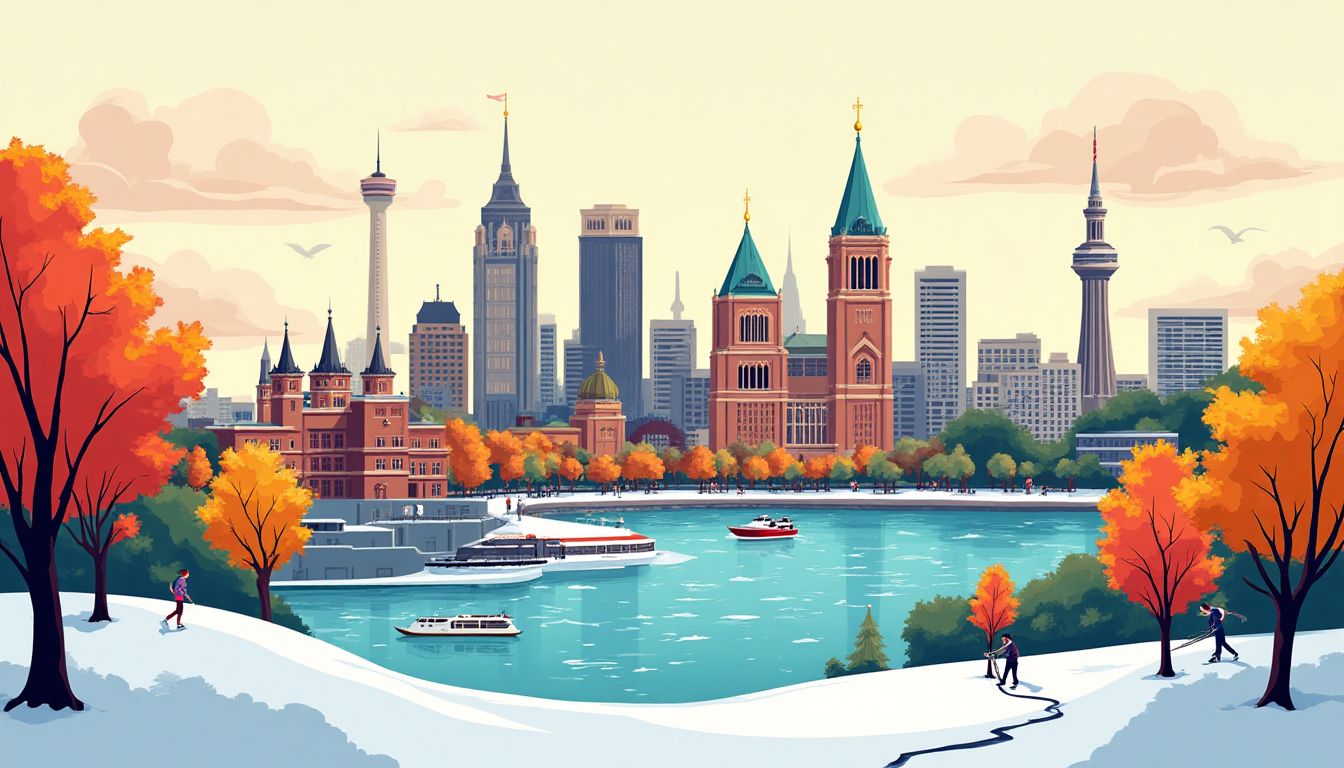
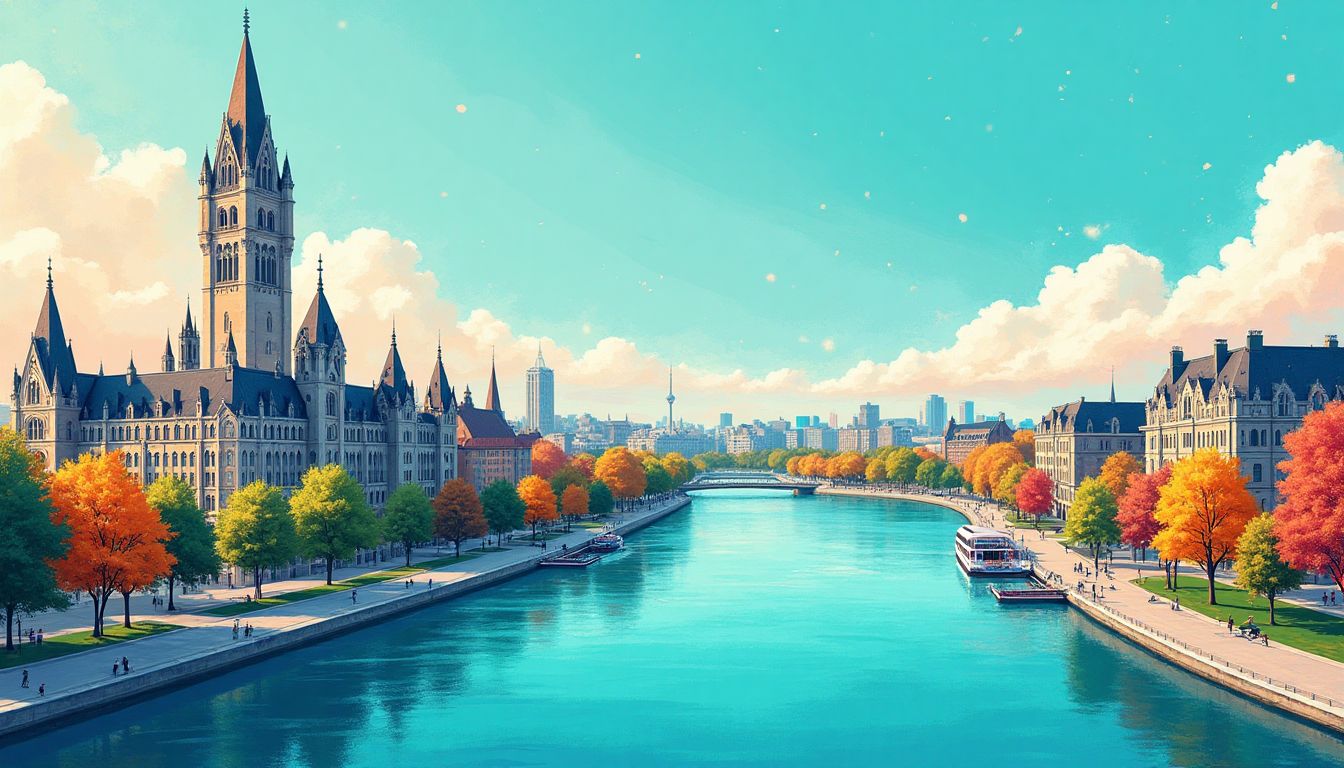
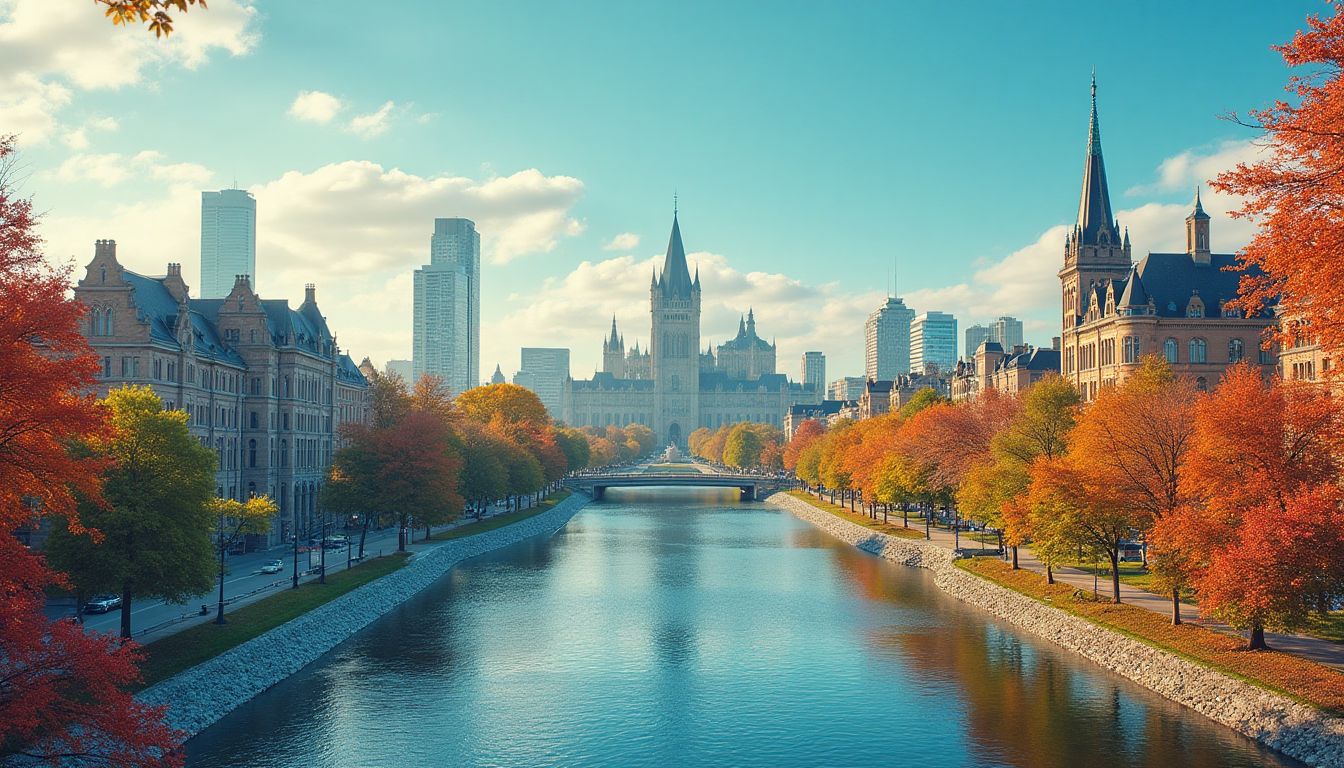

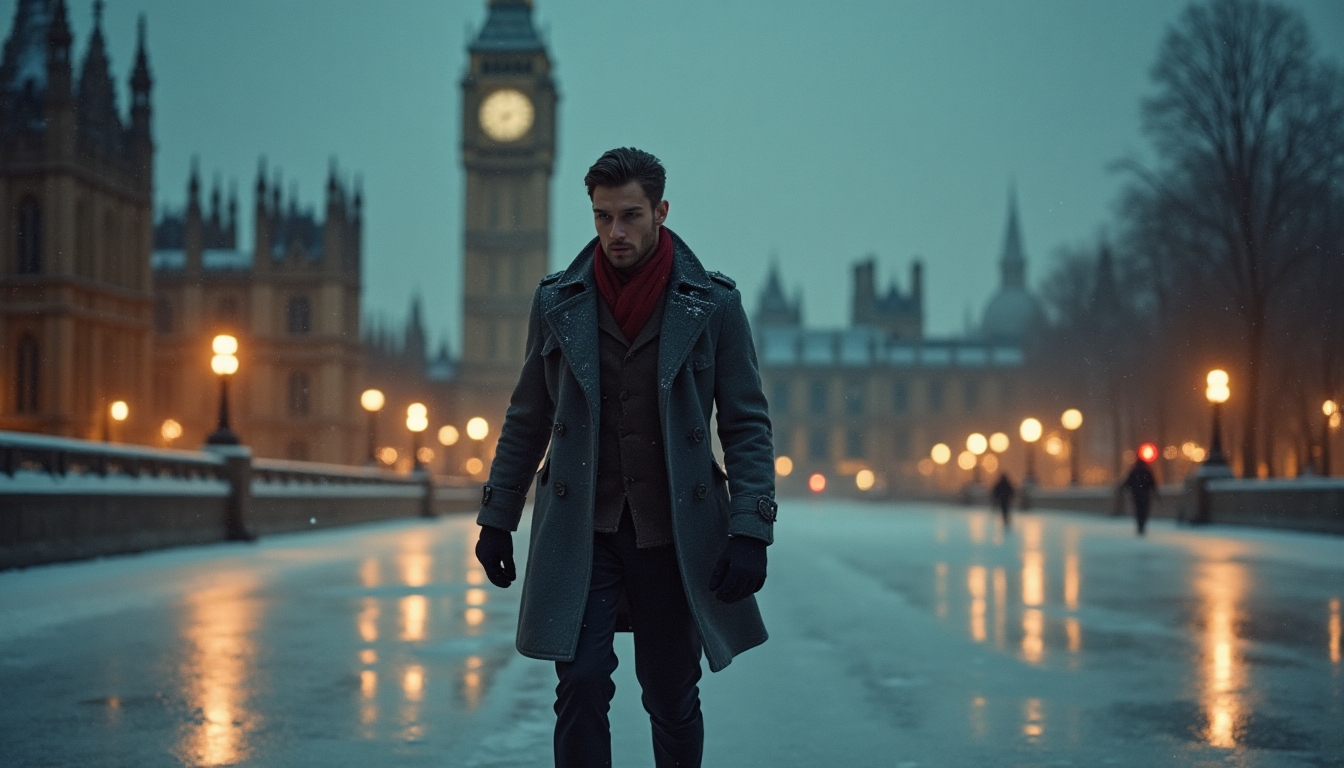
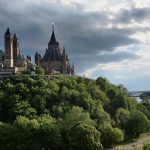
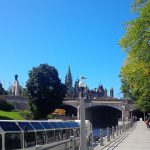
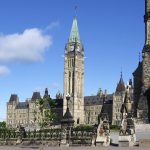
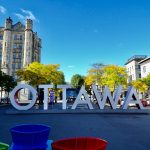
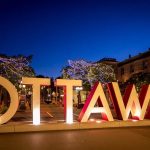


















Post Comment
You must be logged in to post a comment.